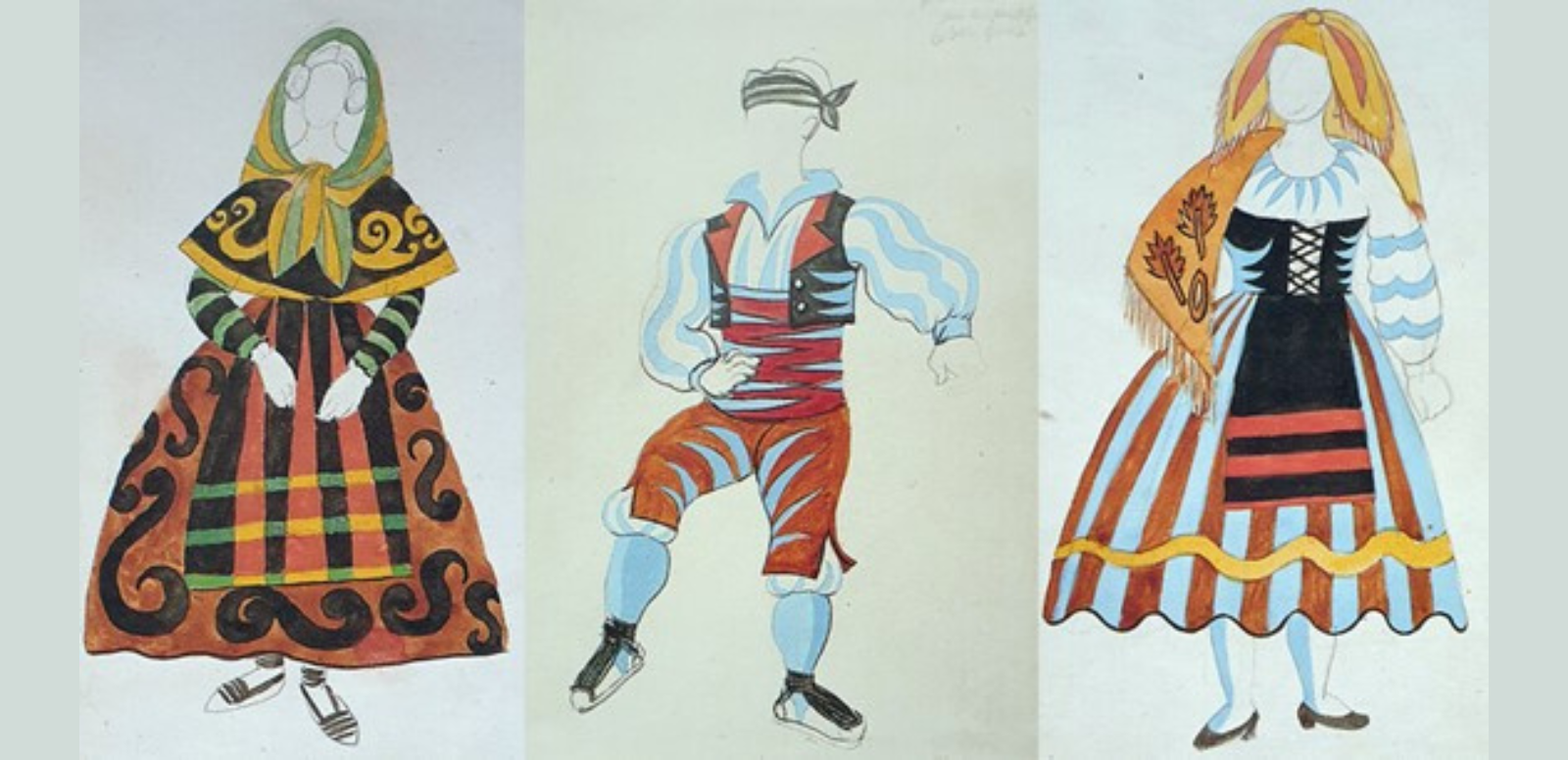
© Sucesión Picasso, VEGAP, Madrid, 2023
The play "El sombrero de tres picos" or "Le Tricorne" was first performed on 22 July 1919 in London, based on the novel of the same name by Pedro Antonio de Alarcón. Manuel Falla was responsible for the theatrical adaptation of the work and the music, Léonide Massine for the choreography and the interpretation of the main role in the work, and Pablo Picasso for the curtain, set and costumes.
At that time, the Ballets Russes, created by Serge Diaghilev, arrived in Madrid in 1916, at the invitation of King Alfonso XIII. During this visit, Serge Diaghilev and Léonide Massine were fascinated by the Spanish cultural, musical and artistic tradition after seeing Manuel Falla's adaptation of "El corregidor y la molinera". The three of them made a trip to Andalusia, during which Serge Diaghilev proposed to his two companions to adapt the complete work of "El sombrero de tres picos" for the Russian Ballet. Pablo Picasso joined this project in 1918 when he returned to his native country after a period living in Italy, while working on the play "Parade" by Diaghilev and Massine. He became in charge of creating the set, the costumes, and the curtain for the play.
In all of Pablo Picasso's work, there is a strong neoclassical inspiration, which is far removed from the artistic currents that we usually associate with the artist, and an influence of the artist Francisco de Goya. The painter designed a set depicting a typical Spanish village, a backdrop with a scene characteristic of a bullfight and a costume with 18th-century garb, all with simple lines and bright colours.
The work by Falla, Massine and Picasso was internationally acclaimed. After its debut in London, the work was performed in Paris in 1920 and in Madrid in 1921.
References:
- Picasso. The three-cornered hat. Drawings for the sets and costumes for Manuel de Falla's ballet [cat. expo., Fundación Juan March, Madrid]. Madrid: Fundación Juan March, 1993

